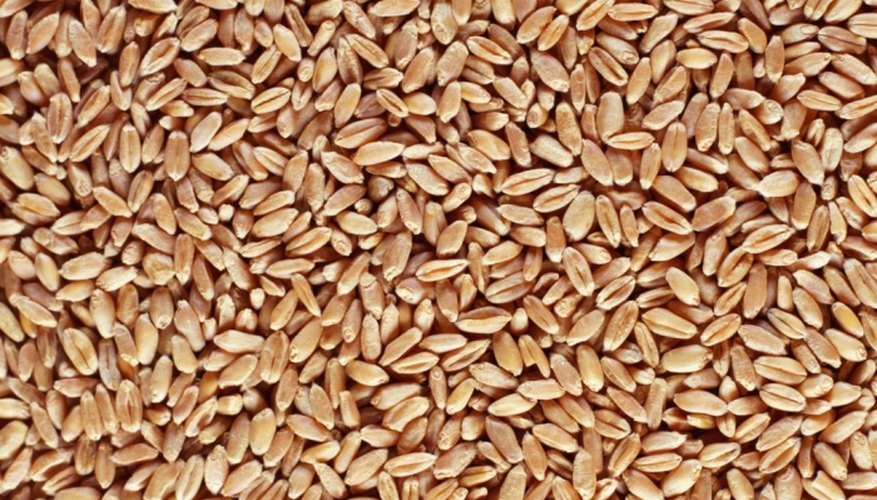People with pinched nerves, sprains, and other aches are often advised to put heat on the afflicted body part to help relieve pain. A heating pad is a common tool for delivering heat, but they are not very flexible and the cord can be a nuisance. Wheat bags can get the same results without the drawbacks. Heat one of these soft flannel bags and the wheat inside will hold heat for a surprisingly long time. The bags are flexible, making them easier to wrap around affected body parts, and safe to take to bed with you at night.
Cut out two pieces of flannel fabric that are 18 cm (7 inches) by 48 cm (19 inches). Make sure that you do not include the selvedge edge in your fabric, which is the tightly woven edge that runs along each side on a bolt of fabric.
- People with pinched nerves, sprains, and other aches are often advised to put heat on the afflicted body part to help relieve pain.
- Make sure that you do not include the selvedge edge in your fabric, which is the tightly woven edge that runs along each side on a bolt of fabric.
Lay one piece of fabric on the table with the right side, or more colourful side, facing up. Place the other piece of fabric on top of the first, making sure that the right side is down so they are facing one another. Make sure that all edges are even.
- Lay one piece of fabric on the table with the right side, or more colourful side, facing up.
Pin all four edges to hold the fabric pieces together. Sew along both long edges and one short edge using a 13 mm (1/2 inch) seam. Sew the fourth edge, but stop when you are three inches from the end of the fourth edge. This will leave an opening in one end of your bag.
Turn the bag right side out by pushing the fabric through the opening that you left in the end. Use a chopstick or other blunt-ended stick to help push the fabric through the hole, and to push out the corners and make them square.
- Turn the bag right side out by pushing the fabric through the opening that you left in the end.
- Use a chopstick or other blunt-ended stick to help push the fabric through the hole, and to push out the corners and make them square.
Put the tip of the funnel into the hole in the bag. Pour in 355 ml (1.5 cups) of wheat kernels. Tap the bag on the table to make sure that wheat has moved to the bottom of the bag.
Measure 15 cm (6 inches) from the bottom of the bag and pinch the bag closed at this point. Place a pin here to mark this spot. Sew a seam at the 15 cm (6 inch) point across the entire width of the bag, trapping all of the wheat in the bottom section.
Add another 255 ml (1.5 cups) of wheat to the bag and sew another seam six inches from the first one, to trap this wheat in the second section of the bag.
Fill the top section of the bag with another 255 ml (1.5 cups) of wheat. Pin closed the hole in the top of the bag and stitch it closed by sewing right along the fold line.
Place the wheat bag into a microwave along with a glass of water, which will add a small amount of moisture to the wheat. Heat on high for one minute, then feel the temperature of your bag. Depending on the strength of your microwave, you may need to heat the bag a little longer or a little less next time.
TIP
Hand-stitch felt facial features onto one end of the bag to turn this into a friendly worm heating bag for children to use.
WARNING
Allow your wheat bag to dry out in an open space before storing it in something enclosed. This will prevent the wheat from becoming mildewed.
